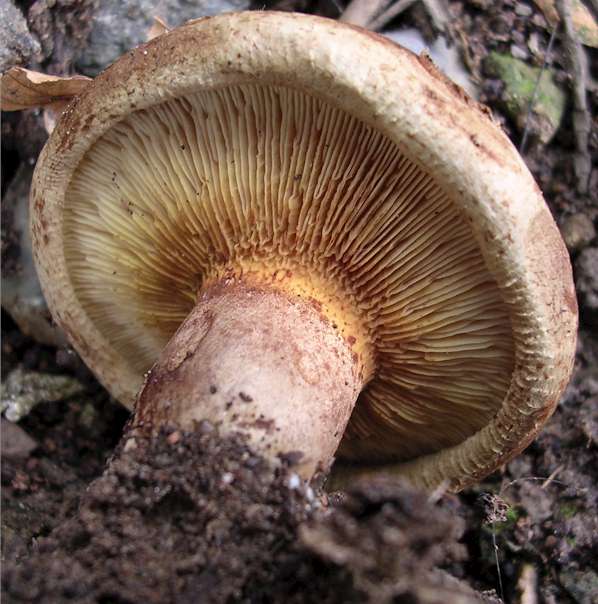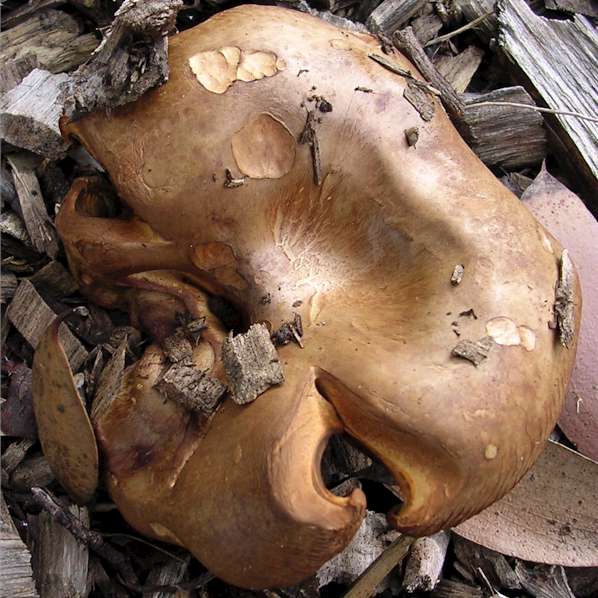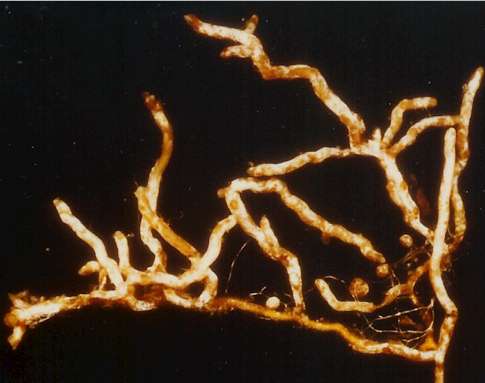..
PROFILES OF FUNGI: PAXILLUS INVOLUTUS Paxillus involutus is a very common mycorrhizal fungus, found on the roots of several types of coniferous and broadleaved trees, including alder (Alnus glutinosa), birch (Betula spp.), Sitka spruce (Picea sitchensis), pines (Pinus sylvestris) and Douglas fir (Pseudotsuga menziesii). It is also found in a wide range of habitats, including coal waste heaps in Scotland, where it grows in association with self-seeded or planted birches. The young fruitbodies (Fig. 1) have a strongly inrolled margin, giving rise to the common name for this fungus, "Brown Roll-rim". Later, the cap expands to 12 cm or more with a much less conspicuous in-rolled margin (Fig. 2) and can split in dry conditions (Fig. 3). The fruitbodies of Paxillus involutus are reported to be poisonous, although they have traditionally been eaten by many people in eastern Europe. P. involutus has recently been discovered to cause Immune Haemolytic Anaemia, the onset of which can appear after many years of consuming this fungus and can be fatal. It seems likely that the onset of Immune Haemolytic Anaemia is related to repeated long-term exposure to the toxin, after years of eating the fungus with little or no ill effect.
Fig 1. A young fruitbody of Paxillus involutus, with the characteristic inrolled margin of the cap. [© Jim Deacon]
Fig 2. Two mature fruitbodies of Paxillus involutus, with a young fruitbody for comparison. [© Jim Deacon]
Fig 3. An old (mature) fruitbody of Paxillus involutus, showing cracking caused by drought. [© Jim Deacon] The mycorrhizas of Paxillus are quite distinctive (Fig. 4) compared with the mycorrhizas of some other fungi. They are long and tortuous, with irregularly spaced branches usually arising along one main axis. The branches are often covered with white hyphae, but these hyphae can easily be lost by bruising. Microscopic features of the mycorrhizal surface and the fungal sheath surrounding the roots are used to confirm identification.
Fig 4. Mycorrhizas of Paxillus involutus Although Paxillus involutus is only one of many mycorrhizal fungi, it has special significance because it has been found on coniferous and deciduous trees of all ages and in a wide range of habitats, including potentially adverse environments such as mine spoil heaps. In its wide range of tolerance of adverse environments, P. involutus is similar to Pisolithus tinctorius, a puffball-like fungus known to be mycorrhizal with pines in the USA, and often used in afforestation programmes in poor or sandy soils. |



